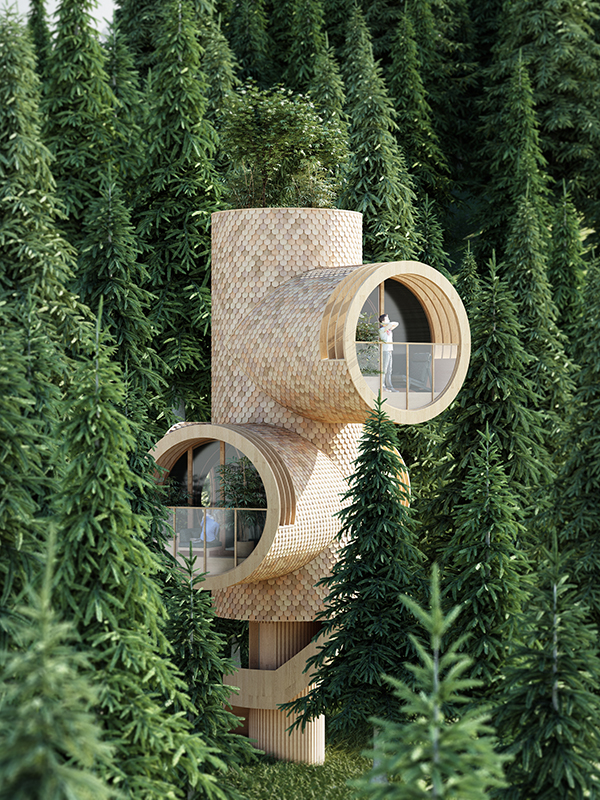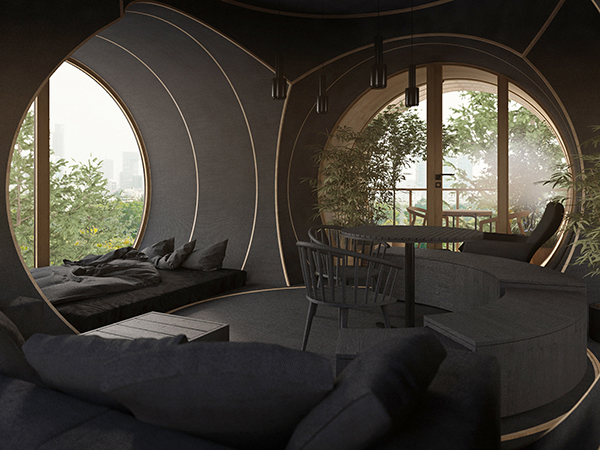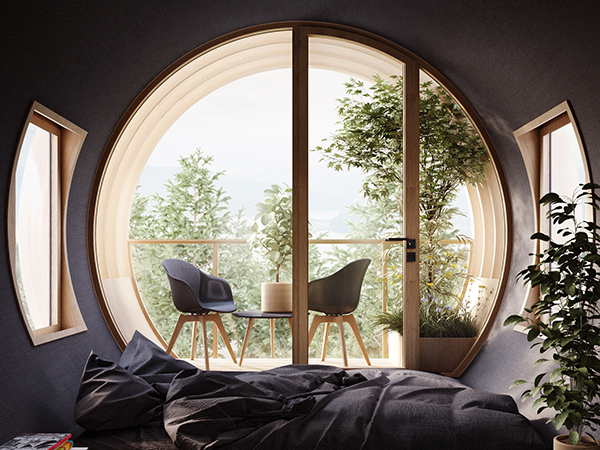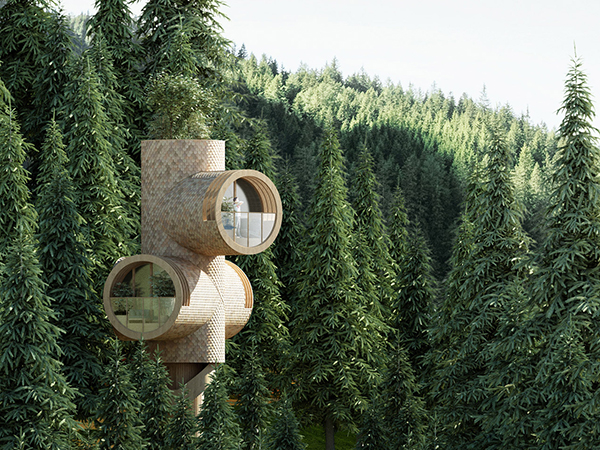Led by Penda co-founder Chris Precht and his wife Fei Precht, Austrian architecture studio Precht has unveiled ‘Bert’ for tiny-homes start-up Baumbau, a conceptual modular treehouse designed to make it look like the single-eyed character from the animated film Minions.

The architects explain that Bert was conceptualised as a treehouse that was shaped by the forest.
“Like a trunk of a tree the building connects to the soil on a minimal footprint. All functions are stacked above and branch out in different directions. The interiors are kept in dark fabric which creates a cosy, cave-like atmosphere and orients the views towards the large glass openings. The leaf-like shingles on the facade are kept in various shades of browns and camouflages the structures with the natural background.”

For regions with little cultivated forestry and wood-craftmanship, the main wood-structure can be replaced by steel. With that concept, Baumbau can work globally on unique structures, the firm notes.
“The modular system of Bert makes it easy to react to a client’s brief in real time. The client informs the architects about the desired program, like bedrooms, kitchen, living room, library and bathroom, after which they can make immediately different variations of arrangements with all necessary information of cost, size, schedule, etc. That gives the clients a certain transparency about things that keep uncertain during a common design process for a long time,” say the architects.

Although Bert was designed as a tiny home, it is also possible to arrange the modules in larger configurations. From garden houses to multi-family homes to hotels or developments in the city. Bert is conceived as a modular building system and all its parts are prefabricated in a factory and put together on site. Throughout its life-span, Bert is flexible to grow taller and wider by adding new modules.
Bert has been designed with solar panels either on roof or off-site, a composting toilet and a water treatment facility on the ground floor.

“We are fully aware that architecture is this serious and profound craft with a long culture and tradition. You see that when we architects find reference for our projects in art, philosophy, literature or nature. For this project, we also looked at art to find reference. But not at Michelangelo or Dali.”
“Rather we looked at cartoon characters of Sesame Street or Minions. We took a playful look at this project and wanted to create a rather unique character than a conventional building. A quirky looking character that becomes part of the wildlife of a forest. I think this quirkiness can create feelings and emotions. And maybe these are attributes in architecture that are missing these days,” says the firm.
The first modules are due to be rolled out in a few weeks, the firm says.
Images & text: Precht & Dezeen

